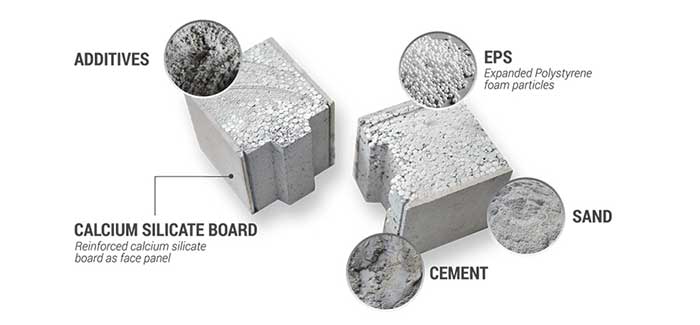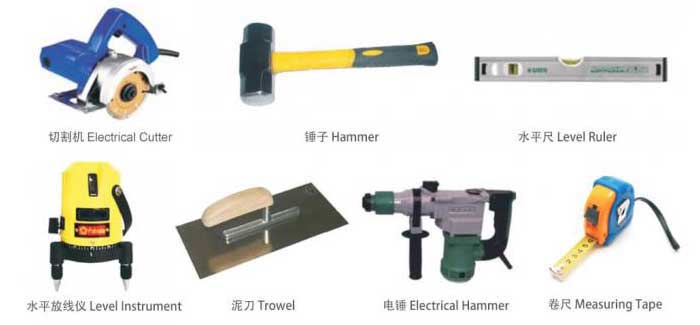Welcome to VANJOIN. Your satisfaction is our biggest pursuit.
What's the EPS cement sandwich wall panel?
EPS Cement Sandwich Panel is a kind of lightweight energy saving wall material, which uses cement calcium silicate or reinforced calcium silicate board as face panel, filled with cement, Expanded Polystyrene (EPS) foam particles, and as core material and forming by one time compound. The panels are widely used as non-load bearing interior & exterior wall panels, partition wall panels in many kinds of houses and buildings, such as prefabricated houses, family homes, dormitories, residences, apartments, luxurious villas, factory warehouses, production workshops, auxiliary plants, hotels, bars, shopping malls, restaurants, schools, hospitals, airports, etc.. This article will guide you how to install the sandwich panels step by step, kindly let us know if you have any questions about the installation.

EPS Cement Sandwich Wall Panels Installation Tools

EPS Cement Sandwich Panels Installation Process Step by Step
1. Alignment, transportation of materials
In the installation position of the shell wall plate, the beam is placed vertically to ensure the installation of wall panels is aligned. A 1.5 square meter board can be carried freely by 2 people.
2. Sawing of panels
According to the requirements of mobile machines with an arbitrary cut, adjust the width and length of the wall so that the risk of damage is minimized.

3. Sizing
Using a specific proportion of slurry and water to turn into a paste, use water to even up the bumps. After that, apply polymer mortar in the grooves in the wall and in the baseline of the wall.
4. Fitting the sheet
After moving the mortar-covered wall panels to their respective positions, align them vertically with the baseline. Use the crowbar to ensure the wall panels are tightly fitted with one another.

5. In place
Place the walls together closely so that excess mortar can be scraped away. Finally, temporarily fix the wall in place.
6. Adjustments
Check the adjustments of the wall and make the necessary adjustments.

7. Filling of joints
One day after the wall is set up,slurry will be used to fill in the gaps between panes.
8. Installation of crack-resistant material
Three to five days after the joints are filled, crack-resistant materials will be pasted along the joints.

9. Insertion of wires
An electric saw will be utilized for the creation of grooves in which switch boxes and wires can be implanted. Any gaps left behind can be filled with mortar.
10. Plastering of paint
To finish the wall, tiles may be fitted without any scraping. Wallpaper may also be applied directly onto the wall.

11. Installation of door frame
Many types of door frames can be fitted in the wall. The plywood can besecure with nails and wall anchor.
12. Fitting of door and window
Preparing a door and window hole on the installed wall,anchoraging it with splint or lines.

Got a question, comment or business enquiry? We are always happy to hear from you.